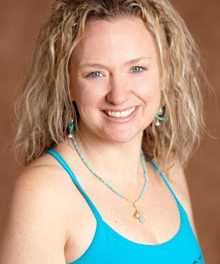 As I was preparing for a workshop on the chakras, or the subtle energy centers of the body, I was struck by the meaning behind the Anahata Chakra, or the Heart Chakra. Perhaps it was the proximity to Valentine’s Day, or maybe just the feeling in my heart that this chakra is the most important of all, but I found myself dwelling here.
As I was preparing for a workshop on the chakras, or the subtle energy centers of the body, I was struck by the meaning behind the Anahata Chakra, or the Heart Chakra. Perhaps it was the proximity to Valentine’s Day, or maybe just the feeling in my heart that this chakra is the most important of all, but I found myself dwelling here.
The word chakra literally means wheel, and the chakras represent the places in the body where many nerves and energy centers meet. They consist of the root chakra, the naval chakra, the solar plexus chakra, the heart chakra, the throat chakra, the third eye chakra and the crown chakra. The fourth chakra and center chakra is the Anahata Chakra, and it is located in the area of the heart, or the cardiac plexus. The word “anahata” literally means, “Un-struck” or “un-beaten.”
When we unfold our heart, we transcend our limited ego and over-indulgent sense of self so that we may find a less selfish and more natural love of ourselves, others and the world at large around us. The sound of our pure heart is thus “un-struck,” so that we may live our lives as if our heart has never been struck by another.
Generally, the Anahata Chakra is associated with love (true, abiding love and something much more than the Hallmark holiday), devotion and self-confidence. In yogic tradition, the Anahata Chakra is thought to govern our ability to love, and to control the quality and depth of our love. It’s location in the center of our core and in the center of the chakras is not coincidental. Our heart truly does govern our very existence. Without it, we cease to exist.
Yogis believe that the chakras are responsible for different feelings and emotions, and that balanced and harmonized chakras produce balanced and harmonized individuals. A heart in balance allows us to love openly and deeply, to feel compassion, peace and a deep connection to others. An under-active Anahata Chakra leaves one feeling cold, isolated and detached, while an over-active chakra leaves one possessive, overly demonstrative, and operating from a place of fear of loss.
We keep our chakras in balance and harmony through a regular yoga practice, meditation, and by being true to ourselves. By learning to forgive and to let go, we can learn to mend our hearts even when they are struck by some misdeed or tragedy in our lives. Through forgiveness, compassion towards others, understanding and kindness, even a wounded heart can become un-struck again.
Open your heart fully to all of life, so that you may give and receive love, freely and fully. May you live long, and may your heart bells ring un-struck.
For more information on the chakras, visit www.dancingdogsyoga.com/aboutus/resources/
Read more Ask The Yogi





